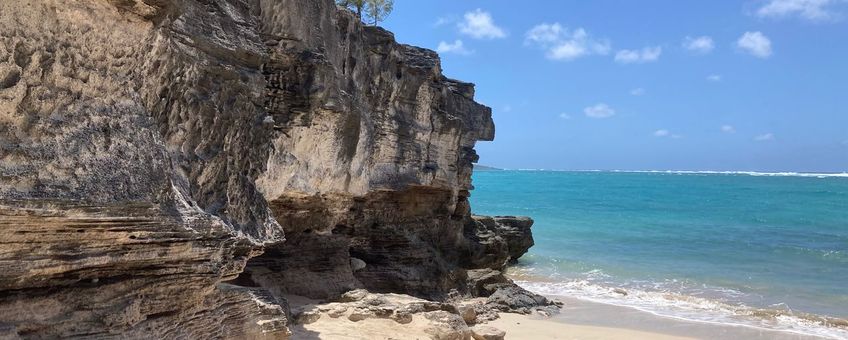
Aggression in extinct island bird due to rising sea levels
Institute for Biodiversity and Ecosystem Dynamics (IBED)On the island of Rodrigues in the Indian Ocean, the Rodrigues solitaire (Pezophaps solitaria), a very aggressive giant pigeon, lived until the eighteenth century. The birds were armed with bulges on their wing bones, which they used to attack each other to defend their territory. “They are hard thickenings”, says paleontologist Leon Claessens of Maastricht University. “We call them punching balls. The birds used these weapons to attack each other. Excavated bones show how much damage a blow with such a punching ball did. Bone fractures were not uncommon”.

Scientific conundrum
All solitaires, male and female, were aggressive and armed, unlike their close relative, the well-known and peaceful dodo (Raphus cucullatus) on the neighbouring island of Mauritius. The Rodrigues solitaire’s aggression long puzzled scientists: in nature, large-scale aggression is not a good strategy. “Aggressive behaviour costs energy and potentially leads to injury or even death”, Claessens says. Aggression is therefore reserved for a few individuals in a group, for example rutting male deer. Aggressive behaviour is also there to deter others in an effort to avoid fights.
Threshold exceeded
A mathematical model by theoretical ecologist Jasper Croll and geologist Kenneth Rijsdijk of the UvA's Institute for Biodiversity and Ecosystem Dynamics (IBED) now offers the explanation for the solitaire's behaviour. Rijsdijk: “The model provides insight into the relationship between behaviour and island size. There turns out to be a threshold value below which the proportion of aggressive birds suddenly increases from say 5 percent on an island with no competition for space to almost 100 percent on an island that is too small”.
 Artistic illustration of two fighting solitaires (Source: Julian P. Hume)
Artistic illustration of two fighting solitaires (Source: Julian P. Hume)
Undersea table mount with volcano
In the last ice age, Rodrigues was about 1,000 square kilometers. About 18 thousand years ago, the ice age ended and sea levels worldwide began to rise. This went very fast, up to 4 meters per century. Rijsdijk: “Within the thirty years of one generation of solitaires, their habitat shrank. This was because Rodrigues had the structure of a so-called guyot, a table mount in the sea, through which a volcano pierced. When, around 11 thousand years ago, the sea water had risen to what is now 60 meters below sea level, suddenly the outer ring of the island – the table top – flooded very quickly. The table mount disappeared underwater and today only the top of the volcano is visible above water. The island now has an area of only 100 square kilometers, the size of the Dutch Wadden island Terschelling”.
Drowned nests
The population of solitaires was in trouble. Rijsdijk: “Less space means less food. When an island slowly gets smaller, the balance within a species quietly adjusts. But because Rodrigues flooded so quickly, the nests of the birds that lived on the coast literally drowned. They had to migrate inland and came into conflict with other specimens. The aggressive specimens chased away the peaceful ones and took over their nests”.
Because this process of rapid drowning lasted several millennia, strong selection on aggression took place: the most aggressive birds retained their territories and gained the upper hand. They passed on their – genetically determined – aggression to their young and when the island had finally lost 90 percent of its area, all birds were aggressive.
More information
- The article Sea level rise and the evolution of aggression on islands was published in iScience.
Text: Institute for Biodiversity and Ecosystem Dynamics (IBED)
Photo's: Rijsdijk and colleagues
Illustration: Julian P. Hume
